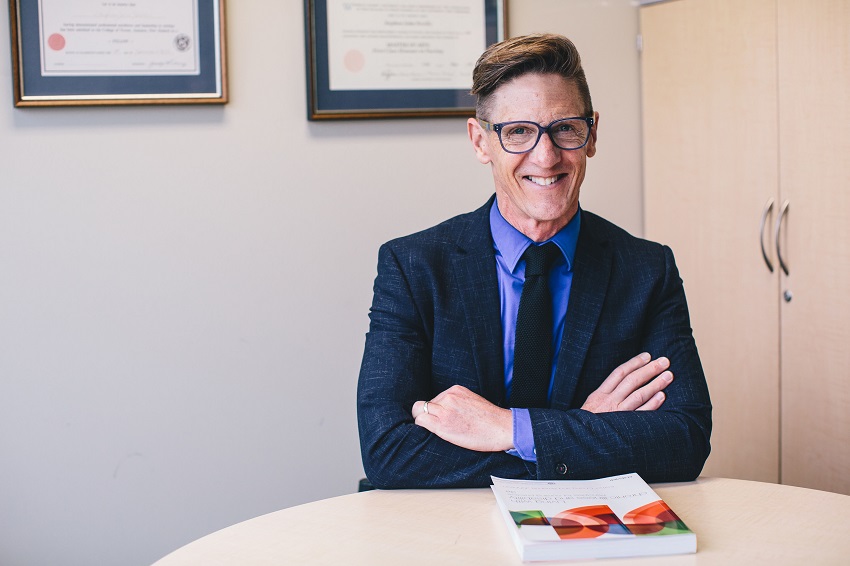Making rural New Zealand age-friendly

A study led by Professor Stephen Neville at AUT looks at the impact of physical and social environments on a group of oldest-old people, aged 85 years and over, and their ability to remain socially engaged in a small rural community.
“Age-friendly initiatives are relatively recent in New Zealand and almost entirely focused on urban areas, yet rural communities are typically older,” says Professor Neville.
“This research has added the voice of oldest-old people living rurally to existing recommendations for the development of age-friendly communities. Policymakers and planners will find this information useful as they consider how to adapt as the population grows older.”
Environmental gerontology seeks to optimise the relationship between ageing people and their environment. The study is the first of its kind to examine New Zealand’s rural-dwelling oldest-old. The findings were published in the International Journal of Qualitative Studies on Health and Wellbeing.
It is particularly relevant as the government moves to finalise the Better Later Life strategy for an ageing population and Auckland Council drafts an age-friendly action plan in a bid for membership of the World Health Organisation’s Global Network of Age-Friendly Cities and Communities.
In New Zealand, it is estimated that there will be one million seniors within the next decade. By 2034, a quarter of the population (1.2 million) will be aged 65-plus. Those aged 85 years and over are the fastest growing older adult group, with increasing numbers living independently in their communities.
“The study highlights the interconnection between physical and social environments. An enabling physical environment is essential to support the social participation of people aged 85 years living rurally,” says Professor Neville.
Both the physical and social environments should also enable older people to successfully age in place.
Ageing in place refers to a person’s ability to remain living in their own home and community – safely, independently and comfortably – regardless of age. It is a central tenet of government initiatives in several countries, but one that relies on communities being appropriate places for older people to age.
Researchers interviewed 15 participants, aged 85 years and over, living independently in a small rural area. Two key themes emerged from the conversations.
Negotiating the physical environment: Getting there and back
The first theme, “Negotiating the physical environment: Getting there and back”, emphasises that transport is essential to older people being able to engage with their community.
The study reveals a heavy reliance on driving in the small rural area, due in part to limited public transport and participants having difficulty getting on and off the bus. The most common mode of transport was a privately-owned vehicle.
The group agreed that driving was central to being able to successfully age in place and the thought of not being able to drive in the future was a major concern. One participant noted that she would have to move if she couldn’t get around by herself. “I’d probably move closer to my children and live in a retirement village,” she said.
The dynamics of traffic flow can make it difficult for older people to navigate the physical environment. A particularly complex intersection at one end of the main street was identified as a physical barrier, whether participants were driving or walking, forcing many of them to take a longer alternative route.
Issues with parking, including the lack of spaces close to amenities and short time limits, were problematic for several participants, interfering with essential errands and their ability to engage with the community. The group primarily moved around the community at times when parking was easy to obtain, with the exception of those that held a mobility parking permit.
Maintaining social networks: Places to go, people to see
The second theme, “Maintaining social networks: Places to go, people to see”, relates to the social environment – (the collective social and cultural institutions, patterns and processes that influence the life of an individual or community).
The study shows that most participants had developed enduring and satisfying social networks, as well as being actively involved in local organisations, and felt connected to their community. Family, friends and neighbours played a vital role in enabling them to remain socially engaged. However, while the importance of family was acknowledged, an established network of friends and neighbours was more highly regarded.
Maintaining friendships was an important factor in deciding where to live. Social networks of friends, rather than family, have been shown to contribute to resilience in older people. One participant noted that, when you get older, friends are what matter. “Family is nice, but they are all busy. Your friends are your age and you understand one another,” she said.
Strong relationships with neighbours were especially important for those with no relatives living close by. Sometimes neighbours played the role of surrogate family, even providing care when several participants were unwell.
However, changes in social networks have had an effect on social engagement. Increasing migration in and out of the small rural area had changed the character of the community, and lessened opportunities for spontaneous social interaction. One participant commented on her new neighbours. “We’ve got people who are younger and both working. With them away during the day, I feel a bit isolated. There isn’t the same opportunity to chat,” she said.
Professor Stephen Neville is Co-Director of the AUT Centre for Active Ageing and President of the New Zealand Association of Gerontology. He is also Head of Department for nursing at the School of Clinical Sciences at AUT. His research focuses on the health and wellbeing of older people and marginalised groups, and health workforce issues.